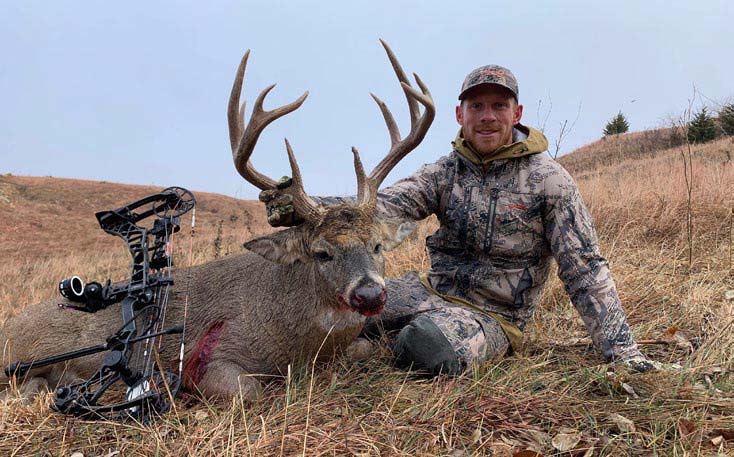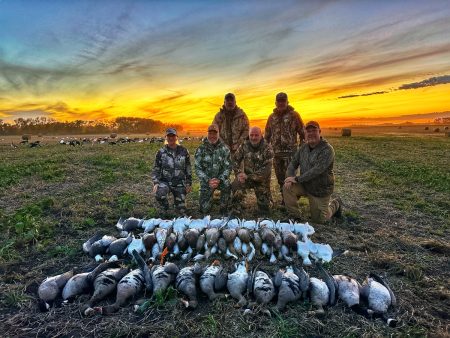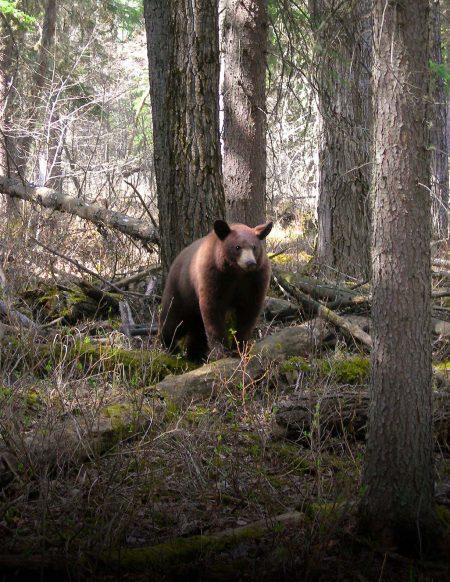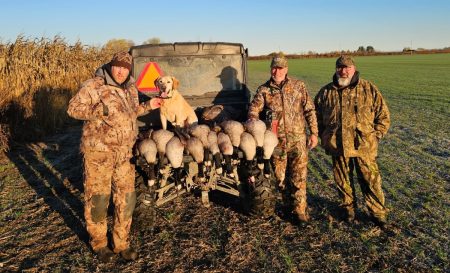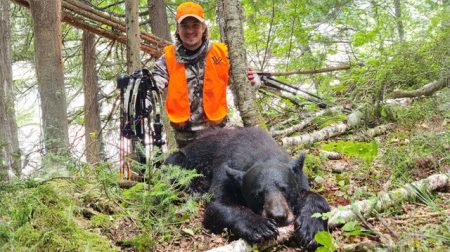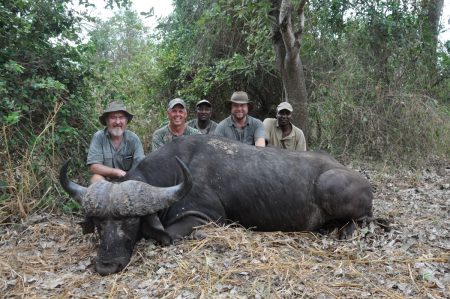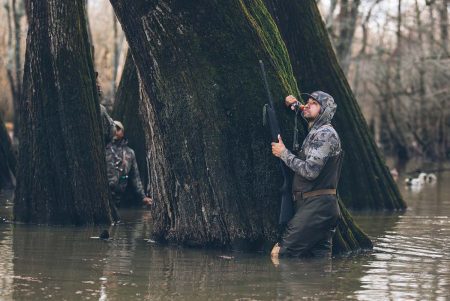Are you harnessing the latest tools and techniques?
When the big nontypical appeared in my spotting scope’s eyepiece, my eyes widened. A lot. He was absolutely huge, especially for the area. I gawked from more than 600 yards away in my vehicle, and I did so because archery season wasn’t yet open. I now knew that a world-class white-tail was roaming the public land I’d be hunting on.
Since the beginning of modern deer hunting, serious deer hunters have worked to improve their success rates. Each year, we make changes, try to think differently and purchase new tools in an effort to perfect our craft. In other words, we’re doing things quite differently than we were 50, 25 and even just 10 years ago.
Having been part of the hunting industry for more than 20 years now, I’ve seen a lot of fancy innovations come through the pipeline. Some work, but many are backed more by fancy marketing than actual performance. I refuse to use products I don’t believe in, so anything I suggest in the following paragraphs is something I’ve used and found helpful myself.
To that end, are you looking to improve your scouting approach? If yes, then let’s discuss some tools and techniques that can get you to the next level.

Hop On an e-Bike
Arguably, e-bikes are one of the most revolutionary transportation tools for hunters — cover ground quickly and minimize your impact. Unlike gasoline-fueled ATVs and UTVs, e-bikes like those from QuietKat have no emissions and operate almost silently. For those reasons, they’re ideal for placing and checking trail cameras, hitting multiple glassing points during the late afternoon, and also hauling treestand gear to stand locations far from roads with minimal effort.
If you’re on an out-of-state hunt in a new area, you face the steep challenge of scouting and hunting within a tight window of time — maybe just a week. If you’ve done your pre-hunt e-scouting, you’ve probably identified lots of potential stand or hunting locations. If so, checking each one on foot eats up a lot of valuable time, especially if any of them are a mile or more from parking areas. If the terrain and game regulations allow, an e-bike like my QuietKat can get you in and out of your potential spots in minutes rather than hours. That, is a game changer.
Buy Some Glass
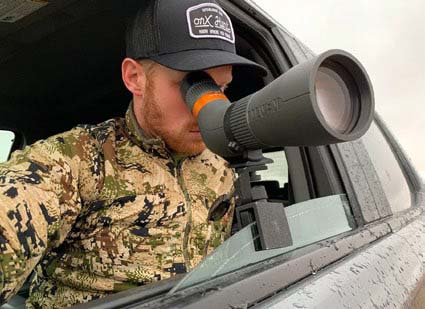
Binoculars are ideal for short-range glassing, but when you want to scout an alfalfa or bean field from 600 or even 1,000 yards away and be able to count antler points on the bucks that show up, you’ll need a quality spotting scope fixed either to your truck window or a sturdy tripod. When glassing with 25-60x magnification, light diminishes quickly during primetime when most mature bucks step out to feed. This is where spending some extra money makes a drastic difference, as cheap spotting scopes lose light like sand through an hourglass.
Top brands that will retain light longer are Leica and Swarovski, but you might have to get a part-time job just to pay for one. Affordable brands that have notable brightness but more afford-able price tags are Hawke, Vortex and Leupold. If you’re looking to buy one spotting scope and use it for the rest of your life, go all in on an ultra-high-end model from Leica or Swarovski. If you do a lot of shorter-range glassing — 300 to 500 yards — then a more affordable option from one of the last three brands I mentioned will perform admirably.
There’s always the temptation to get closer to your subject so that you can see it better. In terms of deer scouting, getting closer can be risky. Even if you don’t spook the deer you’re targeting, it’s possible that you’ll spook others if you get too close. So, sit back at a distance and let a quality spotting scope give you a front-row seat.
Wireless Trail Cameras
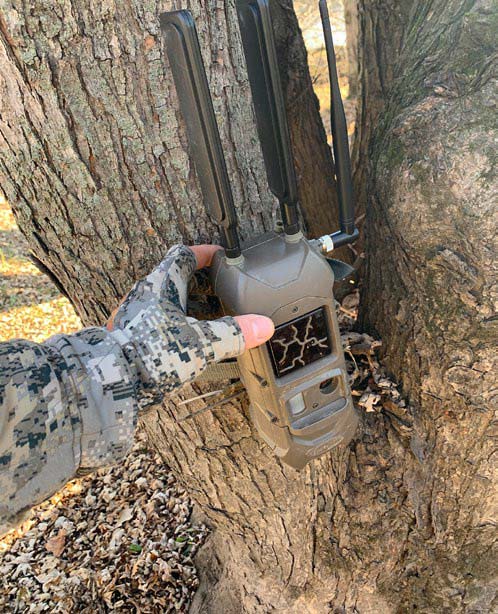
If someone had told me when I started hunting that I’d one day be able to use a trail camera that would send images directly to my phone, I would’ve been shocked. At the time, 35mm models were all we had. I even found that technology impressive at the time, because stringpulled trail timers were the limelight prior to 35mm trail cameras.
Today, we have wireless trail cameras that not only transmit images wirelessly, but videos complete with audio, too. And, some models are so advanced that you can change camera settings remotely from your phone.
Here, the advantages are undeniable. First, you only have to visit the camera location once to set the camera up — no more routine card pulls that introduce commotion and human presence to your hunting area. Second, you save a pile of time since you don’t have to visit cameras to check pictures. Thirdly, you save money, especially if you have cameras in multiple locations or even in different states or provinces, because fuel costs and vehicle mileage are reduced. The only time you’ll have to visit the camera is to swap out batteries or to pull the camera down.
This technology sounds expensive, right? Not exactly. I use a CuddeBack wireless camera that retails for around $200. The cellular plan isn’t expensive, either. It’s just $15 for up to 750 image transfers. I can remotely enable and disable the plan. I don’t have to pay during the months I’m not using it. And, CuddeBack’s CuddeLink mesh network allows you to pair up to 15 cameras to one cell plan. Talk about affordable.
Scout Virtually
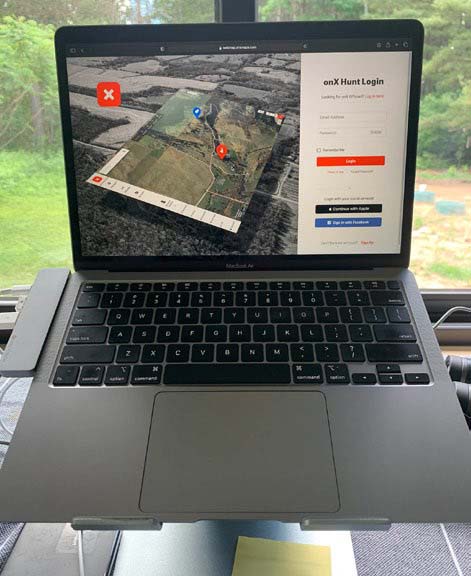
If you’re one of the hunters who hasn’t yet harnessed the advantageous e-scouting phenomenon, wait no longer. If I had to choose between all of the treestands I own and my onX Hunt app, I’d take the app, hands down, every time. I spend hours perusing locations. I not only get an overview of the area I’m considering hunting, but I can see what the neighboring properties look like and how big they are, too. I can look for areas that I feel other hunters are overlooking. I can identify food sources on neighboring properties and find points where I might be able to intercept deer on public land as they travel toward private-land feeding areas. I can also identify little pockets of cover a mile or more from the road in habitat that appears wide open and featureless to the naked eye.
I could go on and on about all of the benefits, but I’ll conclude by saying that I’d have fewer bucks on my wall without my onX Hunt app. Plus, I use it a ton for other species such as elk and turkeys. It’s worth every penny, especially for the DIY hunter.
Take Your Scouting to the Next Level
It goes without saying that how you scout and the tools you use will certainly impact your hunt-ing results come deer season. I can’t promise that what we’ve covered here will put a big buck in your crosshairs or bow-sight housing, but I do believe that, used wisely, these tools and tips will give you an edge and increase the odds of a big-buck encounter. If that interests you, give it a shot.
FORGET THE SCOUTING
This might seem preposterous after reading all of the input in this article, but if you’ve been trying desperately to scout as much as you can and learn as much as possible about your hunting areas or even a specific buck, yet can’t seem to get a mature buck within range, stop scouting and only go in the woods to hunt. Your scouting efforts could be hurting more than helping. You could be leaving a tremendous human footprint, and the deer could be patterning you way more than you’re patterning them.
Further, scouting information can sometimes be used to make poor hunting decisions. Occasionally, I’ve avoided hunting if I don’t have a buck on my trail camera during daylight or if I’ve seen only does while glassing fields. Although scouting information can help you piece the big-buck puzzle together, the problem is that scouting information is historical, not present information. A big buck in a trail-camera image doesn’t mean he’ll show up by your stand the next time you hunt. It already happened, and the future isn’t guaranteed.
Here’s an anecdotal reference in which no scouting landed me two big bucks within a few days of one another. I went on two-state DIY public-land bowhunt in November 2020. I didn’t hang trail cameras. I simply picked out locations to hunt via my onX Hunt app, then went in and hunted them cold-call style, trying to use the element of surprise to my advantage. In one state, I shot a 6 1/2-year old or older 151 3/8-inch buck, and in the other state, I shot a beautiful 10-pointer just 100 yards from a parking area.
I bow-killed both bucks from the ground at about 20 yards apiece, and I arrowed them because I was hunting where they were when they were there, not where a trail camera informed me that they were half an hour or three days before. In some cases, scouting can cause a mental whirl-wind. When that happens and you start second-guessing everything, forget about it and just go hunting. It could land you a beautiful buck like the two I arrowed in 2020.
By Darron McDougal
Per our affiliate disclosure, we may earn revenue from the products available on this page. To learn more about how we test gear, click here.






